Maximize Closet Space with Innovative Storage Solutions
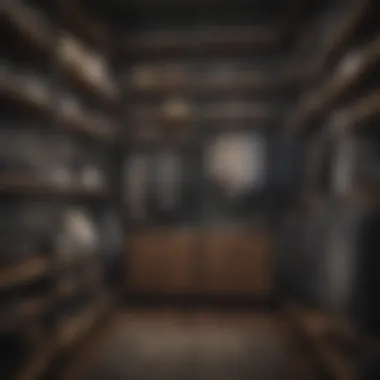
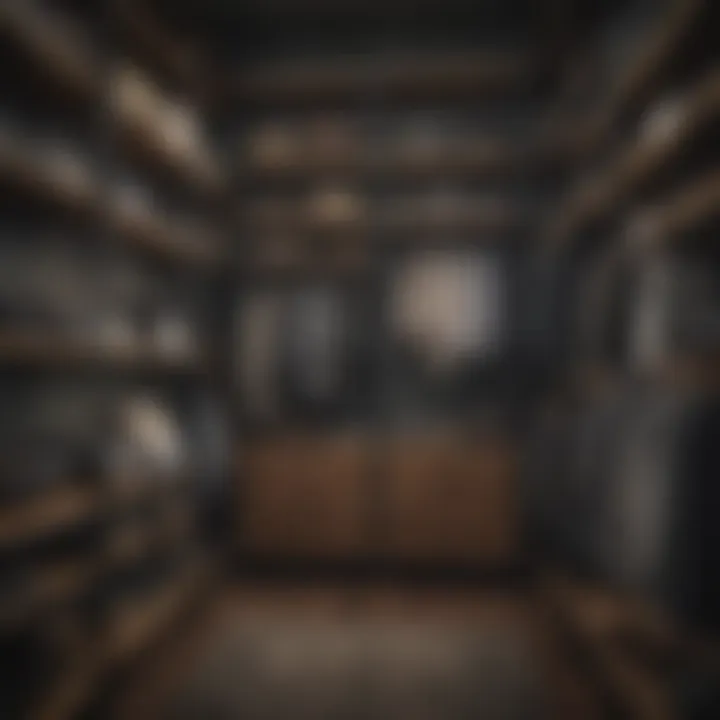
Intro
Insufficient closet space is a common challenge many homeowners face today. It often leads to disorganization, cluttered living spaces, and unnecessary stress. This article aims to explore various innovative solutions that can help you optimize your closet storage. By understanding the psychological impacts of clutter and implementing practical design alterations, you can transform your home into a more functional and aesthetically pleasing environment.
Several strategies will be discussed throughout this piece, providing depth and detail to the topic. Whether you are looking to maximize the storage capacity of a small apartment or aiming to redefine spaces in a larger home, the insights provided here will empower you. From cutting-edge storage innovations to thoughtful organization techniques, finding solutions to your closet limitations is within reach.
Understanding how to best utilize your closet space can not only enhance the functionality of your home but also minimize the psychological burden of disarray. The journey towards a more organized life begins with the right tools and strategies, and this article will guide you step by step.
Understanding the Need for More Closet Space
As homes become a focal point of personal expression and functionality, the need for efficient closet space is paramount. Maximizing closet space is not merely a matter of aesthetics; it impacts daily life and overall well-being. Dysfunctional closet systems can lead to chaos, which ultimately contributes to stress. This article will discuss various strategies to create an organized and efficient storage environment that aligns with your lifestyle needs.
Assessing Current Storage Capabilities
First, a thorough assessment of your current storage is essential. Take a moment to scrutinize what you have. Look at all closets, cabinets, and furniture pieces that may serve as storage. You should ask, "What are the strengths and weaknesses of my present setup?" This evaluation entails cataloging items stored in various spaces. Doing so helps to identify underused areas, as well as pinpoint opportunities for improvement. Understand your storage limitations before implementing any solutions. Getting a grasp of your overall storage capabilities will also make clearer the path to optimizing those functions.
Identifying Personal Needs and Lifestyles
Next, consider your personal needs and how your lifestyle affects your storage requirements. Different individuals have various habits and necessities. For instance, someone who travels often may need more space for luggage and attire, while a family may require organized areas for seasonal clothing and toys. A few questions can guide this exploration:
- What activities do you indulge in that require special items?
- How often do you use essential items?
- What kind of items do you struggle to find space for?
Creating a closet space that reflects your lifestyle ensures you maintain organization. It can simplify daily routines and expedite the process of finding required items. Understanding both your current capabilities and specific needs leads to innovative solutions that can revolutionize how you utilize closet spaces. Together, these elements underscore the importance of optimizing internal storage solutions in our living environments.
The Psychological Effects of Clutter
Clutter is more than just a physical absence of space; it can have significant psychological implications. Understanding these effects is crucial in addressing the organization of our homes. Clutter impacts our mood, reduces productivity, and can lead to increased stress levels. When individuals face an environment filled with disarray, the mind often resonates that sense of chaos. Therefore, this article addresses the importance of recognizing clutter and its psychological burden.
By understanding how clutter affects the psyche, one can better appreciate the benefits of optimizing storage solutions in closets and other areas of the home. A well-organized space can foster a sense of control, leading to improved emotional well-being.
Understanding Clutter and Its Challenges
Clutter manifests in many forms and can be categorized into physical objects, digital spaces, and, to some extent, mental clutter. Recognizing these types is the first step toward management. Most homeowners associate clutter with items left unattended or misplaced. However, it extends beyond physical belongings.
The challenges of clutter include:
- Overwhelm: Large amounts of items can create a sense of anxiety, making the task of organizing seem insurmountable.
- Decision Fatigue: Sorting through clutter requires making choices about what to keep, donate, or discard, which can drain mental energy.
- Distraction: Clutter often competes for attention, making it difficult to focus on tasks and responsibilities.
Managing these challenges involves a thoughtful approach, breaking down the organization process into manageable tasks.
Stress and Productivity: The Hidden Costs
The relationship between stress and productivity is well-documented. Clutter exacerbates stress levels, which can impact overall life quality. When individuals work in disorganized spaces, it is harder to concentrate. A cluttered environment sends signals to the brain that can heighten feelings of distraction and unease.
Not only does this clutter affect self-discipline, but it also lowers one’s ability to execute tasks efficiently. Priorities become muddled, leading to decreased productivity.
"A clean, organized space can lead to a more productive mind, while clutter often restricts potential."
Several studies indicate that reducing visual distractions can significantly improve focus and motivation. Thus, addressing clutter is not merely about aesthetics, but rather a foundational step toward fostering a more effective and serene living or working environment.
To truly maximize the benefits of organized space, it is crucial to tackle the underlying psychological factors associated with clutter. By managing clutter efficiently, individuals can reclaim their time and energy, allowing them to engage more fully in their tasks and responsibilities.
Practical Organizational Strategies
Effective organization is crucial for making the most of closet space in any home. Practical organizational strategies not only help homeowners utilize space more effectively but also streamline daily routines. By implementing the right techniques, individuals can transform their storage areas into functional and easily navigable spaces. Each strategy discussed here offers distinct benefits and considerations, enhancing overall efficiency and enjoyment of the living environment.
Decluttering Techniques: The First Step
Sorting Personal Items
Sorting personal items is an essential first step in decluttering and organizing closet space. This technique involves categorizing belongings into specific groups, such as clothes, accessories, and seasonal items. By systematically evaluating what one has, it becomes easier to identify what to keep and what to let go. The key characteristic of sorting is that it promotes mindfulness about possessions, making it a beneficial choice for this article.
One unique feature of sorting is its ability to reveal duplicates and unnecessary items, which can clutter space. The advantages of this technique include a clearer visual overview of what is owned and easier decision-making for what should remain in the closet. On the flip side, some might find the process time-consuming and emotionally challenging.
Deciding What to Keep
Deciding what to keep is another crucial element in the organization process. This involves making thoughtful choices about which items are essential or truly valued. The key aspect of this section lies in its focus on personal needs and values, making it a valuable option for readers.
A distinctive feature of the decision-making process is the potential to create a curated collection of belongings tailored to individual lifestyles. The advantages here include greater satisfaction with one's possessions and reduced clutter. However, this task can also provoke feelings of guilt or indecision regarding sentimental items.
Donation and Disposal Methods
Donation and disposal methods are vital for effectively managing excess belongings and promoting a more organized closet space. This strategy emphasizes the importance of responsible elimination of items that no longer serve a purpose. The key characteristic of this aspect is its focus on sustainability and community support, marking it as an essential point of interest for this article.
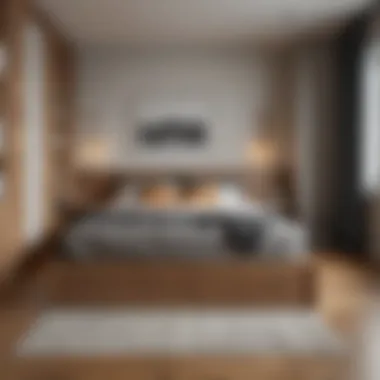

Unique features of donation and disposal methods include various options available, from charity donations to recycling programs. This approach advantages individuals by providing a sense of relief from excess and contributing positively to others. However, it also requires thoughtful planning and can involve emotional decisions about parting with items.
Smart Storage Solutions: Shelves and Bins
Adjustable Shelving Systems
Adjustable shelving systems play a significant role in optimizing closet space. This storage solution allows users to customize shelf heights and layouts according to their personal needs, adapting easily over time. The primary characteristic of adjustable shelving is its versatility, making it a popular choice in modern homes.
One unique feature is the ability to reorganize shelves as items are acquired or removed. This not only maximizes vertical space but also enhances accessibility. The advantages include efficient space usage and a personalized organization system. Nevertheless, the initial installation can require effort and planning.
Clear Storage Bins for Visibility
Clear storage bins for visibility serve as a practical solution for maintaining order within closets. These bins provide a clear view of contents, eliminating the need to rummage through clutter. The main benefit of using clear bins lies in their ability to promote transparency, making them an appealing option discussed in this article.
A unique feature of these bins is their stackable design, which enhances vertical organization. The advantages include easy identification of items and reduced time spent searching for belongings. However, the downside can include limited aesthetic appeal for those preferring a more uniform look.
Underutilized Spaces
Underutilized spaces refer to sections within a closet that may be overlooked, like the area above or beside shelves. Identifying these spaces can significantly contribute to maximizing storage. The key characteristic here is the potential for hidden storage, presenting a beneficial option for readers.
The unique feature of utilizing these areas is the creative solutions that can arise, such as small shelves or boxes. The advantages include increased storage without the need for extensive renovations. However, careful planning is required to ensure that these spaces are accessible and organized.
Maximizing Vertical Space
Overhead Storage Solutions
Overhead storage solutions are an effective way to utilize space that often goes wasted. These systems typically include shelves or racks installed above head height, providing additional storage without taking up floor area. This practical aspect is advantageous for readers aiming to achieve a more organized space.
A distinctive feature of overhead storage is its ability to keep items out of sight but still easily reachable. The advantages of this method are increased storage capacity and a cleaner appearance. Yet, care must be taken to ensure safety and accessibility when retrieving stored items.
Wall-Mounted Racks
Wall-mounted racks are another strategic approach to enhancing the functionality of closet space. By attaching storage solutions directly to the wall, homeowners can free up floor space while keeping frequently accessed items within reach. This method highlights the efficiency aspect, which is key in this article.
One unique feature of wall-mounted racks is their adaptability to various items like shoes, bags, or accessories. Their primary advantages include optimizing space and creating visually appealing layouts. However, installation requires proper tools and may necessitate careful planning related to weight limits and wall durability.
Hook Systems
Hook systems are a practical innovation for storage, allowing users to easily hang items like bags, coats, and accessories. The primary aspect of this system is its simplicity and efficiency. This solution offers a straightforward approach for individuals looking to maximize their closet functionality.
The distinct feature of hook systems is their versatility, accommodating various items while still being visually accessible. The advantages include a quick and easy setup and the ability to see items at a glance. However, the limited weight capacity can restrict the use of hooks for bulkier items.
Designing a Functional Closet Space
Designing a functional closet space is essential for maximizing storage efficiency and creating an organized environment. A well-thought-out closet enhances accessibility and reduces clutter, which can improve your everyday routine. It allows individuals to find items quickly and easily, ultimately saving time and reducing frustration.
When considering how to design your closet, there are several critical aspects to keep in mind. These include your specific storage needs, the layout and dimensions of your space, and personal style preferences. All these factors will contribute to the final outcome, ensuring that the space is not only functional but also aesthetically pleasing.
Custom Closet Design Options
Hiring a Professional Designer
Hiring a professional designer is an option many homeowners consider when tackling closet design. This approach brings in expertise that can significantly enhance the organization and functionality of the space. The key characteristic of a professional designer is their ability to tailor solutions according to individual needs. They can maximize every inch of space and suggest features that you may not have thought about.
One unique feature of hiring a professional is their access to specialized tools and resources, allowing for more effective designs, such as custom shelves or specialized lighting. While this option may be more costly than DIY approaches, the investment can lead to a highly optimized closet, which is a significant benefit for many families.
Do-It-Yourself Approaches
On the other hand, do-it-yourself approaches offer a more budget-friendly alternative that can also yield functional results. DIY allows for personal involvement in the design process, which can provide satisfaction and a sense of ownership over your space. The key characteristic of this method is its flexibility; homeowners can change their minds and adjust on-the-fly.
A unique feature of DIY designs is the vast array of tutorials and resources available online, guiding you through each step. The advantages of this approach include significant savings and the ability to customize according to your style. However, it requires time and a willingness to learn new skills, which can be a disadvantage for some.
Cost Considerations
Cost considerations are crucial when designing a functional closet. Closet designs can range widely in price based on the materials used, the complexity of the layout, and the expertise involved. Understanding the budget is a vital aspect of the planning process.
The key characteristic of evaluating costs is that it helps prioritize what features are most essential. This allows you to make informed decisions about where to invest more and where to save. A unique feature of focusing on cost is the availability of affordable solutions that do not compromise on aesthetics. The disadvantage, however, is the potential to overlook important design aspects if the focus is too narrowly defined on spending.
Using Color and Lighting to Enhance Space
Color Psychology in Small Spaces
Color psychology plays a significant role in making small spaces feel larger and more open. The choice of colors can evoke different feelings and perceptions. Light colors tend to make spaces feel more expansive while darker shades can create a cozier effect. The key characteristic of applying color psychology is its ability to influence mood and perception within the closet.
One unique feature of considering color in closet design is that lighter colors tend to reflect more light, enhancing the overall brightness of the space. This approach is beneficial for smaller closets which may lack direct sunlight. Nevertheless, too much white can sometimes feel sterile, so balance is important.
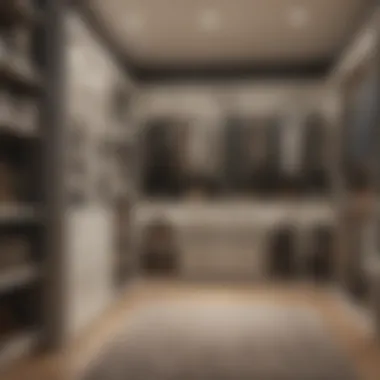

Optimal Lighting Techniques
Optimal lighting techniques are essential in ensuring functionality and ambiance in closet spaces. Proper lighting makes it easier to identify and access stored items, while also enhancing the visual appeal of the design. The key characteristic of good lighting design is versatility; using a combination of overhead lights and accent lighting can create an inviting environment.
One unique feature here is the use of LED lights, which are efficient and come in various color temperatures. These lights can illuminate areas that are typically dark, such as corners or shelves. However, improper placement of lights can lead to shadows or glare, which should be avoided.
Mirrors and Reflections
Mirrors play a powerful role in closet design by adding depth and openness to the space. By strategically placing mirrors, you can create the illusion of a more extensive area, making the closet feel less confined. The key characteristic of using mirrors is their reflective quality, which enhances both function and style.
A unique aspect of incorporating mirrors into the design is their ability to amplify light, thereby brightening the closet significantly. This can be particularly advantageous in smaller or darker spaces. However, one should be mindful of placement; mirrors facing away from light sources may not have the desired effect and can result in more darkness than light.
Key Takeaway: Designing a functional closet not only maximizes space but also enhances the user experience. Balancing elements of professional input, personal creativity, and cost considerations will lead to a closet that meets both practical and aesthetic needs.
Incorporating Modern Storage Trends
In the realm of closet optimization, incorporating modern storage trends proves essential. As demands for space increase due to urban living, the need for innovative solutions becomes pronounced. These trends not only focus on maximizing storage but also emphasize functionality and style. Understanding these trends can lead to more efficient use of space and enhance the overall aesthetic of a home.
Multi-Functional Furniture
Bed Frames with Storage
Bed frames with storage represent a practical solution for maximizing underutilized space in bedrooms. These bed frames typically come equipped with built-in drawers or compartments beneath the mattress. This design feature aids in managing seasonal clothing or extra bedding without taking additional space in a closet.
The key characteristic of these frames is their dual function—they serve as both a bed and a storage unit. This makes them increasingly popular among homeowners looking to declutter. A unique feature is the ease of access to stored items; drawers usually slide out smoothly, which enhances functionality. However, some may find that the weight or bulk of the mattress affects the ease of using these drawers.
Convertible Furniture Options
Convertible furniture options take versatility to the next level. These pieces can transform from one type of furniture to another, such as a sofa that converts into a bed or a table that expands for hosting guests. This adaptability is crucial in small spaces where room functionality must be maximized.
The highlight of convertible furniture is its ability to serve multiple purposes. As a result, it is favored in settings where every inch of space counts. A unique feature is the mechanism that allows quick transformation, appealing to those who move frequently or host visitors often. Nonetheless, some designs may compromise sturdiness or durability when frequently converted.
Slimline Appliances and Fixtures
Slimline appliances and fixtures address the emerging trend of compact living solutions. These products are specifically designed to fit in smaller spaces while maintaining essential functionality. For people living in urban areas, where floor space is often a luxury, slimline options become particularly beneficial.
Narrow Wardrobes
Narrow wardrobes provide an excellent storage solution without taking substantial floor space. Their design allows for the organization of clothing and accessories in limited areas. One key characteristic is the verticality that maximizes height, making them a brilliant alternative to wide, sprawling closets.
The advantage of narrow wardrobes lies in their ability to fit in small nooks, making them invaluable in cramped apartments or bedrooms. However, their limited width can pose challenges when organizing a larger wardrobe, requiring thoughtful curation of clothing items.
Compact Dressers
Compact dressers are similar in intent to narrow wardrobes but focus on a smaller footprint while offering storage for various clothing types. These dressers come in a variety of designs and configurations, making them suitable for diverse interior layouts. A defining feature is their ability to integrate drawers that prioritize accessibility over volume storage, optimizing space use effectively.
Emphasizing adaptability, compact dressers can work in almost any room, serving dual functions as storage solutions and decorative elements. On the flip side, they may not accommodate bulky items, limiting their use for larger clothing types.
Incorporating modern storage trends into closet designs can significantly enhance functionality and aesthetics while maximizing available space.
Exploring Innovative Technology for Storage
Technology is transforming various areas of our lives, including how we manage our personal spaces. The focus on innovative storage technology is crucial for homeowners looking to optimize closet space effectively. This section highlights two main areas within this topic: smart closet technology and various apps and gadgets that can assist in inventory management. By integrating these technologies, individuals can enhance their closet organization, leading to a more functional living space.
Smart Closet Technology
Automated Lighting Systems
Automated lighting systems are an essential component of smart closet technology. These systems offer convenience and efficiency, allowing lights to turn on and off automatically when a closet is accessed. A key characteristic of these systems is their ability to adjust based on motion sensors or timers. This not only reduces energy consumption but also enhances the user experience.
The unique feature of automated lighting is that it can be customized to illuminate specific areas within the closet, thereby improving visibility. One advantage of this technology is that it aids in the quick retrieval of items, helping to streamline the daily routine. However, a potential disadvantage could be the initial installation costs, which might not be justifiable for all budgets.
Climate Control Features
Climate control features represent another noteworthy aspect of smart closet technology. These features are designed to regulate temperature and humidity levels within the closet environment. The key characteristic of climate control is its capacity to protect sensitive items, such as leather shoes or seasonal clothing, from potential damage caused by harsh conditions.
A unique feature of these systems is their ability to connect with home automation systems, allowing for seamless integration. The advantages include a prolonged lifespan for garments and accessories, which can justify the investment. However, users must weigh the higher costs against their specific storage needs and usage.
Apps and Gadgets for Inventory Management
Inventory Tracking Tools
Inventory tracking tools are invaluable for managing closet space efficiently. These digital tools can assist in maintaining an organized inventory of clothing and accessories, offering real-time updates. A fundamental characteristic of these tools is their ability to scan barcodes or manually input items for tracking. This benefit makes it easier to assess what you own, reducing the urge to purchase duplicates.
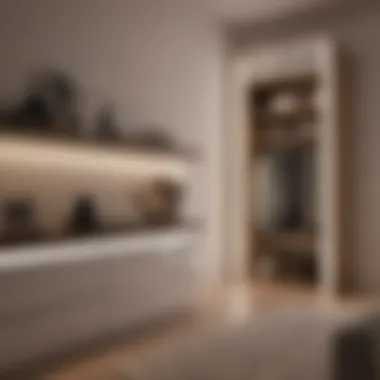
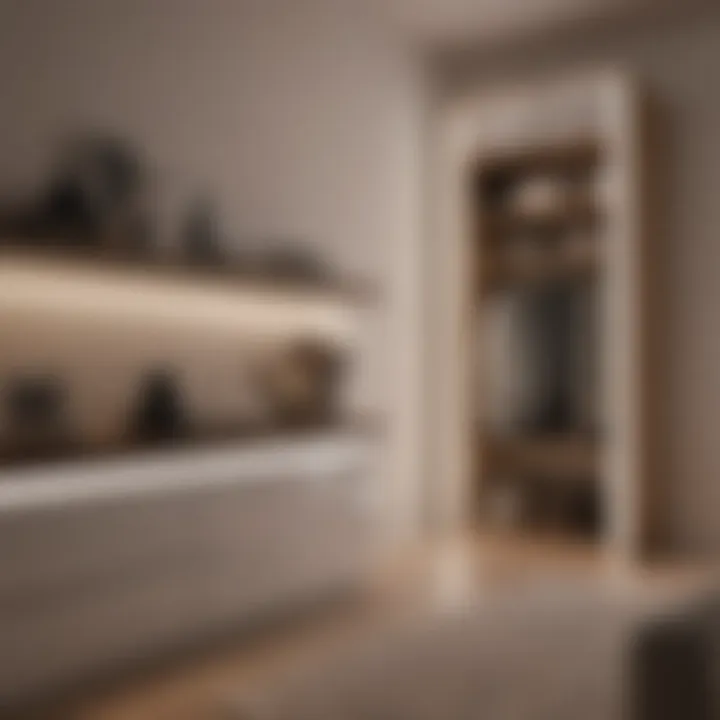
The unique aspect of inventory tracking tools lies in their organization capabilities. This means users can categorize items by season, style, or frequency of usage. While the convenience and time-saving aspects are significant advantages, it should be noted that not all tools have user-friendly interfaces, which may pose a challenge for some users.
Virtual Closet Apps
Virtual closet apps represent a modern solution for optimizing closet space. These applications allow users to create a digital representation of their closet, enabling them to mix and match outfits without physically trying them on. A crucial characteristic of virtual closet apps is their interactive nature, which enhances user engagement.
One unique feature is the ability to share outfits on social media or with friends for feedback. This can provide a fresh perspective when selecting outfits for different occasions. The benefits of using a virtual closet app include improved decision-making and continuous engagement with one’s wardrobe. However, a potential drawback may involve the dependency on smartphones and devices, which could be a concern for some users.
Utilizing innovative technology in closet management not only simplifies organization but also adds a layer of sophistication to everyday routines.
Case Studies: Successful Closet Transformations
Examining case studies of successful closet transformations can provide invaluable insights for homeowners seeking effective solutions. These real-life examples of closet redesign show practical applications of innovative ideas. They highlight not only the benefits of optimized space but also the considerations necessary for making these changes successful.
By analyzing different scenarios, readers can gain a clearer perspective on how certain strategies may be adapted to their own needs. The impact of well-executed designs can extend beyond mere aesthetics, influencing efficiency and everyday utility.
Additionally, insights into various budgets and spaces offer practical guidance for anyone considering a transformation.
Small Space Makeovers
In urban settings or smaller homes, maximizing space is often a challenge. Small space makeovers demonstrate creative use of limited square footage. One effective approach is to employ vertical storage solutions. For instance, converting a standard closet into a reach-in style can significantly free up floor space. Feature cabinets equipped with pull-out shelving allow easy access to items that would otherwise remain buried.
Innovations, like foldable hanging racks, are also beneficial. These installations can easily disappear when not in use. Some homeowners have repurposed nooks or corners that previously served no purpose, turning them into mini-closets.
Here are some practical strategies observed:
- Utilizing vertical space through double-hanging rods.
- Integrating hooks and pegboards for accessories.
- Employing clear bins to quickly identify items.
Adapting to what is available allows for project success. Each small change can accumulate, leading to a more organized and aesthetically pleasing space.
Luxury Closet Redesigns
Luxury closet redesigns serve another segment of homeowners, focusing on functionality without sacrificing elegance. These transformations often include custom-built designs that cater to specific needs and exquisite taste. For instance, high-end options often utilize rich materials like hardwoods and glass, creating a stylish yet practical environment.
Integrated lighting solutions play a crucial role in luxury designs. Accent lighting can showcase special items and add ambiance. Furthermore, custom shelving and cabinetry can be tailored to house clothing, shoes, and accessories efficiently.
Attention to detail is vital in luxury closets. Some expansive spaces allow, for example, dedicated areas for accessories or even dressing rooms that enhance the experience of selecting outfits.
Considerations for luxury designs include:
- Quality materials for durability and aesthetic appeal.
- Smart technology for customizable lighting and climate controls.
- Functionality in layout to facilitate easy access and organization.
Implementing these elements can elevate the typical closet into a personal boutique experience, effectively combining luxury with practicality.
As demonstrated by these case studies, successful closet transformations depend on thoughtful design and strategic planning. Whether working within a small area or aiming for luxury, the right choices can yield significant results.
Future Trends in Closet Design
The future of closet design is moving towards solutions that prioritize efficiency, sustainability, and simplicity. As homeowners become more conscious of their environmental impact, the demand for innovative, eco-friendly storage options is growing. These trends reflect a shift toward maximizing functionality while minimizing wasted space. The incorporation of smart technologies and a focus on minimalist aesthetics are also shaping what modern closets look like. By understanding these trends, homeowners can make informed decisions that enhance not only their storage capabilities but also the overall ambiance of their living spaces.
Sustainable Materials and Practices
Sustainable materials and practices in closet design are no longer optional; they are essential. Homeowners prefer materials that are not only durable but also environmentally friendly. Options such as bamboo, reclaimed wood, and recycled metal are becoming increasingly popular.
Benefits of Sustainable Materials:
- Durability: Eco-friendly materials often have a longer lifespan, reducing the need for replacements.
- Lower Environmental Impact: Using sustainable materials helps decrease deforestation and pollution.
- Healthier Homes: Many sustainable materials are free from harmful chemicals found in traditional products, creating a healthier living environment.
Moreover, sustainable practices, such as using local materials, reduce transportation emissions and foster local economies. Being conscious about the source of materials can lead to a more responsible and rewarding home improvement project.
Trends in Minimalism
Minimalism is more than a design style; it's a philosophy that emphasizes simplicity and functionality. In closet design, this trend encourages homeowners to reduce clutter and focus on essential items only. Thus, creating a space that is not just aesthetically pleasing but also functional.
Key Elements of Minimalism in Closet Design:
- Open Spaces: Closets are designed to appear airy and spacious, utilizing light colors and simple lines.
- Thoughtful Organization: Items are stored methodically, allowing for easy access and visibility.
- Quality over Quantity: Homeowners are encouraged to invest in high-quality storage solutions that serve multiple purposes.
"Embracing minimalism not only transforms spaces but also elevates the quality of life."
This trend resonates particularly with younger generations who prefer a lifestyle focused on experiences rather than accumulating possessions. As trends continue to evolve, the integration of sustainability and minimalism will become key components of closet design, appealing to homeowners around the world.
Final Thoughts on Closet Optimization
The journey of maximizing closet space is not merely about organization. It is about creating a harmonious environment within the home. An optimized closet contributes to both functionality and aesthetic appeal. This article has highlighted various strategies that can help homeowners reclaim valuable space, allowing them to live more comfortably and efficiently.
When considering closet optimization, it is essential to focus on specific elements. First, understanding personal needs and lifestyles can inform the type of organizational systems to implement. Secondly, practical solutions, such as smart storage trends and innovative technology, can provide additional layers of efficiency. Every detail matters in maximizing space, from shelving units to the correct choice of lighting.
The benefits of these improvements extend beyond mere aesthetics. A well-organized closet minimizes stress and enhances productivity. Less clutter promotes a clear mind, allowing individuals to navigate their daily tasks with greater ease. Therefore, optimization is not just a luxury; it is a necessity in today’s fast-paced environment.
Considerations for maintaining organization are critical as well. Regular assessments of storage capabilities and the application of decluttering techniques can sustain the positive effects of optimized spaces over time. Embracing these strategies can ultimately transform a chaotic space into a haven of order.



